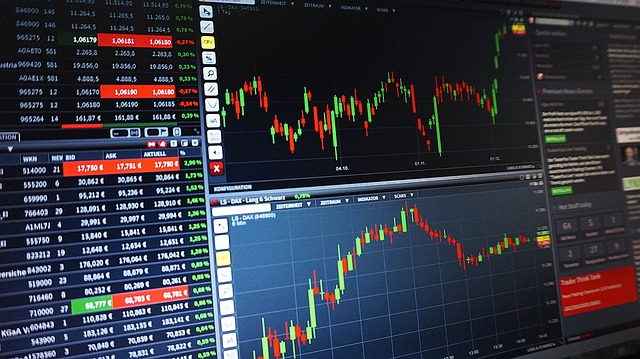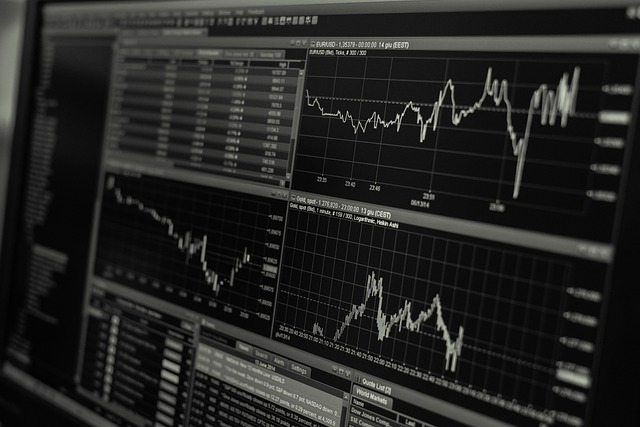There is a dizzying amount of indicators, chart patterns…even types of charts.
And that should make you extremely happy.
What is the riskiest thing about an unpredictable situation? Uncertainty right? What if you could go into any situation with tons of information? Like before, a job interview.
What if the job posting included all the information you needed to get the job? A list of what qualifications you need, the experience you should have, even what clothes to wear. Or better yet, all the information you needed to beat out the other candidates?
That’s why more data is better when trading. And that’s why you should consider the Inside Bar pattern when using candlestick charts.
Keep reading to find out how to used these extremely useful Inside Bar candlestick patterns can be used to get even more information when trading.
Understanding the Inside Bar pattern

First, some housekeeping. Technical analysis largely depends on using past price movement data to hopefully forecast market conditions which create an opportunity for profit. This can be the price breaks, a beneficial price movement, or a price moving in the opposite direction. And Inside Bar patterns attempt to do that too.
But what is the Inside Bar pattern? It is a large mother bar or candle followed by smaller candle whose body and wicks are “enclosed” within the larger candle’s body.
What does the Inside Bar pattern forecast? It can forecast either a pattern continuation or a price reversal following a period of consolidation, depending on the current market conditions, preceding the Inside Bar patterns.
Definition and identification
As mentioned above, when trading the Inside Bar chart pattern you need to look for the mother bar or candle, followed by the smaller candle, called the baby bar.
To trade Inside Bars, make sure that the smaller candle closes within the mother candle’s body. Wait until the third candle to form before acting to avoid false signals.
You will also need to notice if the first “mother bar” is a bullish or bearish and, consequently if the Inside Bar pattern is a bullish Inside Bar or a bearish Inside Bar.
This will greatly affect the signal for the upcoming trend.
Psychological interpretation
As a general rule, my dear market interpreter, is that longer candles followed by shorter sticks essentially reveal market sentiment where buying and selling balance each other or the asset’s price is in consolidation.
A bullish Inside Bar can show that the buyers have a slight upper hand, whereas a bearish Inside Bar can show that the balance is skewed slightly towards the sellers.
The aftermath of the Inside Bar depends on the preceding trend and the current market trend.
The role of Inside Bars in technical analysis

There are various types of Forex trading strategies that you can use with the Inside Bar pattern, including range and breakout trading.
When range trading, a market must be in a sideways trend, the initial approach is to wait until the Inside Bar pattern emerges.
Consider that the subsequent candle reflects a decline in buying or selling momentum after a substantial first Inside Bar candle, often hinting at the commencement of a consolidation phase known as the Inside Bar range. This could signify the establishment of a new market equilibrium.
To enhance your trading strategy, add a Relative Strength Index (RSI) indicator as a complementary tool to your Inside Bar analysis. This enables you to assess whether the price has the potential to persist in its current trend, undergo a reversal, or remain within the range.
The alternative approach to capitalise on the Inside Bar pattern involves the Inside Bar breakout trading strategy, considered by many as a more advanced trading method.
In this scenario, you must have pinpointed the Inside Bar setup characterised by a notably large bullish candle succeeded by a smaller bearish candle, encapsulated by the first candlestick of the Inside Bar pattern.
The pivotal moment happens with the emergence of the third candlestick of the Inside Bar chart pattern, surpassing the second candle and signalling a potential uptick in the price.
To validate the signals yielded by the Inside Bar, you can also employ a Simple Moving Average indicator, where the crossover should coincide with the formation of the mother candle (the initial candle).
Inside Bars and market trends
Inside Bars work best in a strongly trending market. It is not the best pattern when markets are volatile or experiencing choppy price movement, as you’ll see many rallies, sell-offs and period of consolidation.
So use with caution and always in conjunction with other technical analysis tools including RSI, MA or EMAs to gauge the high and low range, volume and momentum.
Inside Bars, support and resistance
Plotting support and resistance levels when you use the Inside Bar pattern to predict a continuation trend, a breakout or a reversal is crucial.
This can help you avoid false signals and acting without having the entire picture of the current market conditions.
For example, you may see the Inside Bar candle pattern develop, but it seems to be testing the range of resistance or support. This might mean that the pattern is just a correct not a signal for a profitable Inside Bar setup.
Strategies for trading the Inside Bar pattern
Traders use the Inside Bar pattern to make buying or selling decisions in two ways. First, in a stable market, it suggests a balance between bulls and bears. Second, in breakout situations, it hints at exciting opportunities for predicting price increases.
Entry and exit strategies
In trading, effective entry and exit strategies can be very effective, and the Inside Bar pattern provides valuable insights for both.
As an entry strategy, traders look for Inside Bars in trending markets, interpreting them as a pause before potential continuation.
A breakout above or below the Inside Bar’s range serves as a signal to enter a trade, anticipating a price movement in the direction of the breakout.
For exits, traders often employ techniques like setting profit targets or trailing stops. The Inside Bar pattern’s simplicity and versatility make it a powerful tool for traders seeking well-timed entries and exits in dynamic financial markets.
No matter the strategy though, protecting yourself with both stop loss and take profit, especially when using the Inside Bar candle pattern, is crucial, as false signals when using the Inside Bar candlestick pattern should always be a consideration.
Advanced trading techniques
There is a saying that states if the only tool you have is a hammer everything starts to look like a nail. If you only use the Inside Bar setup, you are cheating yourself out of a valuable and potentially profitable trade setup.
RSI, MAs, SMAs and EMA as well as more advanced indicators such as Bollinger Bands can help you gather as much insight and data as possible.
Also do not overlook changing your time frame when using Inside Bar setup. If the preceding trend is a long term one, the potential for a significant movement can be possibly magnified.
Also by changing your scope, you may see patterns and your indicators may give you signals in contrast or confirming what you see on a shorter time frame.
Risk management and psychological aspects
Mitigating risks with Inside Bars
Managing risk is critical to any trading strategy, including when using the Inside Bar setup. Here are some risk management strategies you can consider:
- Set stop loss ordersDetermine where you will exit the trade if the market moves against you. This predetermined level is your stop loss. Placing a stop loss helps limit potential losses and protects your capital.
- Position sizingDetermine the size of your position based on the level of risk you are willing to take on a particular trade. This can be a percentage of your overall trading capital. Avoid risking too much on a single trade, especially in volatile markets.
- Consider risk-reward ratioEvaluate the potential reward relative to the risk in a trade. Ensure that your potential reward justifies the risk you are taking. For example, aim for a risk-reward ratio of at least 1:2, meaning the potential profit is at least twice the amount you are risking.
- Use trailing stopsAs a trade moves in your favour, consider adjusting your stop loss to lock in profits. Trailing stops automatically adjust as the price moves, helping you secure gains while allowing for potential further upside.
- Diversify your portfolioAvoid putting all your capital into a single trade or asset. Diversification can help spread risk across different investments, reducing the impact of a poor-performing trade on your overall portfolio.
- Stay informed about market conditionsBe aware of economic events, news releases, and other factors that could impact the market. Understanding the broader market context can help you make more informed decisions and manage risk effectively.
- Practice risk-averse trading psychologyEmotions can play a significant role in trading. Stick to your risk management plan, avoid impulsive decisions, and don’t let fear or greed drive your trading choices.
Remember, no strategy guarantees success in trading, and losses are inevitable.
Effective risk management is about minimising the impact of those losses and preserving capital for future opportunities.
Adjust your risk management approach based on your risk tolerance, trading style, and market conditions.
Conclusion
Inside Bar setup can be another weapon in your arsenal when trading and creating an effective strategy. It can be used given the right conditions to place potentially profitable trades by forecasting subsequent price action.
No matter the type of trading you choose, including the Inside Bar candlestick pattern, it should always be used in conjunction with other technical indicators and with the appropriate risk management measures to protect yourself and capital.
Trading Inside Bars can be an effective technical analysis tool, when used correctly.
Is an Inside Bar bullish or bearish?
Trading Inside Bars can be both. The mother bar can be both bullish or bearish and you may also see a bullish Inside Bar or bearish Inside Bar.
What is the Inside Bar strategy?
The Inside Bar pattern strategy or Inside Bar strategy is when a larger mother bar or is followed by a candle that is enclosed within the previous candle body.
Is Inside Bar trading profitable?
If seen, a favourable Inside Bar setup can be taken advantage of with the right accompanying information and risk management to create positive trades.
The content provided here is for informational purposes only. It is not intended as personal investment advice and does not constitute a solicitation or invitation to engage in any financial transactions, investments, or related activities. Past performance is not a reliable indicator of future results.
The financial products offered by the Company are complex and come with a high risk of losing money rapidly due to leverage. These products may not be suitable for all investors. Before engaging, you should consider whether you understand how these leveraged products work and whether you can afford the high risk of losing your money.
The Company does not accept clients from the Restricted Jurisdictions as indicated in our website/ T&C. Some services or products may not be available in your jurisdiction.
The applicable legal entity and its respective products and services depend on the client’s country of residence and the entity with which the client has established a contractual relationship during registration.




